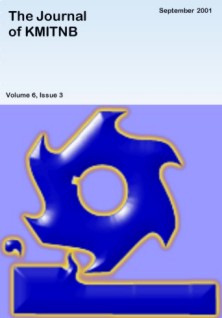ThaiScience
ThaiScience
THE JOURNAL OF KMUTNB
Volume 33, No. 02, Month APRIL, Year 2023, Pages -
Factors influencing modal shift to the commuter rail system a case study of salaya, thailand
Atul Subedi, Siradol Siridhara
Abstract Download PDF
This research addresses the mode choice behavior for commuters traveling between Salaya and Bangkok. The choice model was developed based on utility theory to evaluate the effects of attributes on commuters’ decisions. To design the questionnaire survey, Stated Preference approach was practiced by creating hypothetical scenarios of attributes for potential commuters of the future SRT Light Red line. Two multinomial logit models were created and calibrated based on individuals’ private car ownership status. Altogether, 444 participants completed the questionnaire from the study area. Calibrated models were accurate and were able to forecast the future rail mode share. The value of travel time of private car owners was 69.24 THB/hour, compared with 113.02 THB/hour for those without private cars. This might have been attributed to other socioeconomic and trip characteristics such as income, profession, time of day, and trip purpose, which should be further investigated. Direct demand elasticity revealed that travel time was more influential in mode choice than travel cost for the overall population. However, sensitivity of travel time was found to decrease with an increase in ownership of private cars. Moreover, an increase in car ownership was found to be a barrier to shift to other available modes. It was expected that if the Light Red Line’s traveling time took 55 minute with the fare of 60 baht between Salaya and Bangkok, the company would reach 41.5% market share. The outcomes allowed the company to develop operational policies for the Light Red line to enhance its mode share and promote sustainable commuting options.
Keywords
Multinomial Logit; Stated Preference; Commuter Rail; Mode Choice; Demand ElasticityTHE JOURNAL OF KMUTNB
Published by : King Mongkut's University of Technology North Bangkok
Contributions welcome at : http://www.journal.kmutnb.ac.th
